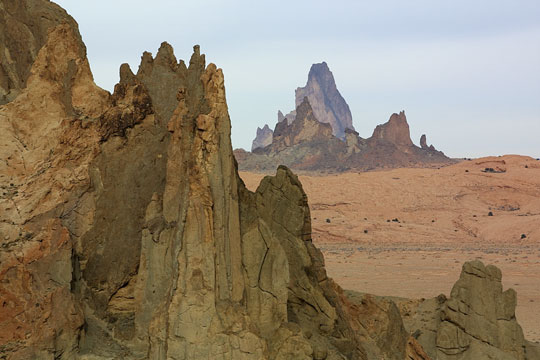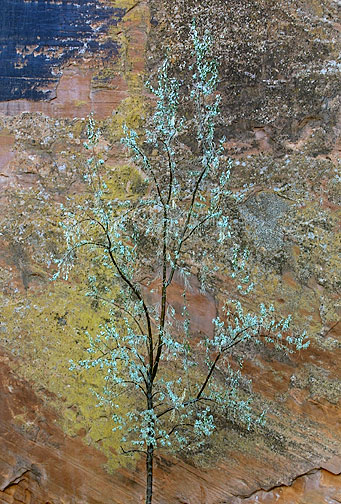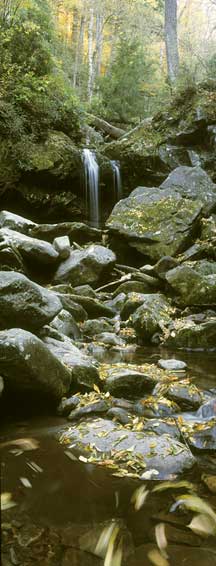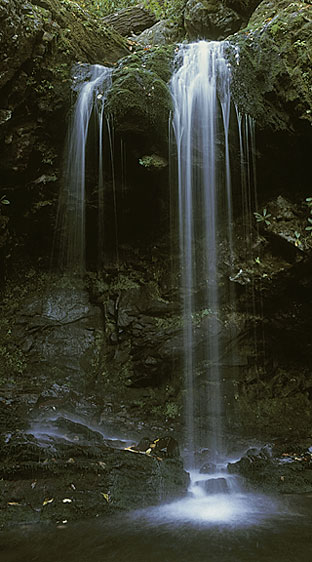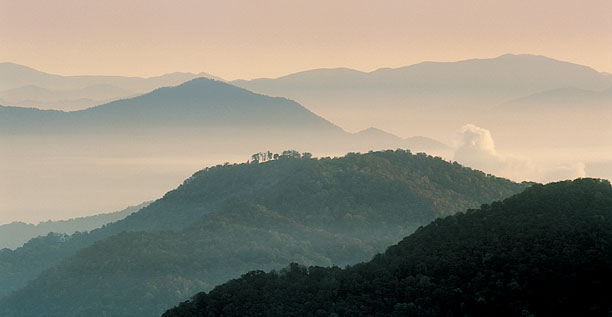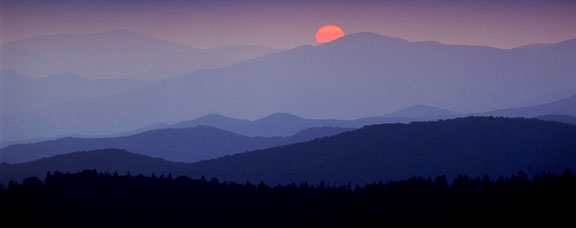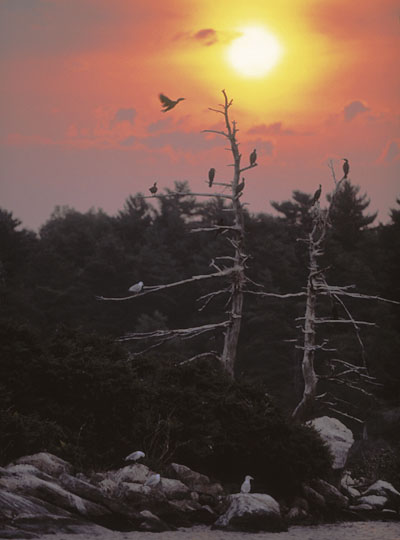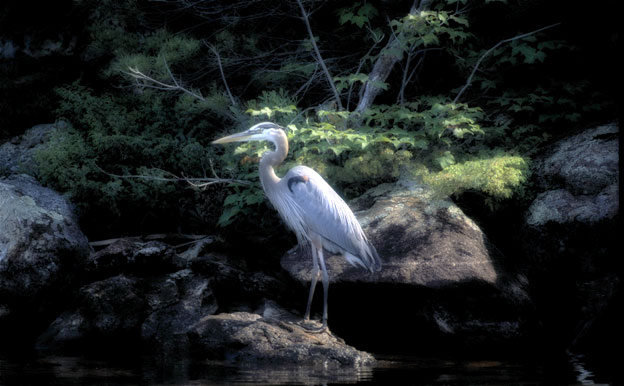This page features selected photographs from my portfolio taken during 2000
that I am particularly pleased with and for which there is an interesting story.
Current entries can be foundhere.
December, 2000
This was a very productive month for me. My week-long trip toNorthern Arizonaproduced more than a typical number of portfolio-grade images. For this reason I’m including two photographs for December, this as well as the next one below.
Photographed with a Canon EOS D30 and 70~200 f/2.8L lens at ISO 100. RAW Mode.
Monument Valleylies north of the town ofKayenta. As you drive northward toward the valley you pass a most imposing butte calledAgathla Peak. I’ve never been able to photograph it successfully.
On this trip, as we leftMonument Valleyto drive to theBisti Badlands, once again I drove pastAgathla(also known asEl Capitan) and wondered when the best time of day and what the best angle might be to properly photograph this monoliths. The light was flat and no unique perspective presented itself. We drove on.
After gassing-up inKayentawe turned ontoRte. 160and started driving eastward. Just a few miles later the sky started to brighten and we saw a small ragged butte in the foreground withAgathla Peakin the background.
I’m tremendously pleased with this photograph. It provides a unique perspective and an image that I’ve never seen before from a spot along a relatively heavily traveled highway.
December, 2000
Russian Olive & Cliff‚ Canyon de Chelly, Arizona. December, 2000
Photographed with a Canon EOS D30 and 70~200 f/2.8L lens at ISO 100. RAW Mode.
On a trip toCanyon de Chellyin northern Arizona in early December we had expressed an interest inRock Artto our Navajo guide. As we were driving up the valley floor he stopped at one point and helped us cross a fence to where some pictographs were located high on the cliff wall. While theRock Artwas excellent I was stunned by an absolutely lovely Russian Olive tree growing right next to this colourful cliff face. The use of a moderate telephoto focal length flattened the perspective and turned this into an almost abstract image.
This has turned out to be one of my favourite images from the trip and resulted simply from a classic case of serendipity.
If you’re interested in why this particular photograph’s colours are appealing you might enjoy reading my new article onColour Theory.
November, 2000
Grotto Falls, Great Smoky National Park. October, 2000
Photographed with a Hasselblad XPan and 30mm and 45mm lenses on Provia 100F
Great Smoky National Parkin Tennessee and North Carolina is one of the finest locations for landscape photography in the southeastern United States.
Grotto Fallsis found up a mile-long hiking trail in theRoaring Forkarea ofGreat Smoky. It was one of the more fascinating falls that I photographed during my two months of occasional shooting in Georgia, North Carolina and Tennessee in the Fall of 2000.
These two views are of the same waterfall, which is about 12 feet high. It appears to be much smaller than that in the left hand image, doesn’t it? You’ll notice as well that the right hand image has been reversed. I did it because it simply “reads” better that way.
The swirling leaves at the bottom of the left-hand frame are the results of the 8 second exposure needed.
While this looks like an idyllic location, in reality the place was swarming with tourists and their children. I waited perhaps 15 minutes before I had the 10 second window needed to take the wide frame without anyone standing beneath the falls.
October, 2000
Waynesville Valley‚ North Carolina, 2000
On a shoot inGreat Smoky National Parkand theBlue Ridge Highwayin late October, 2000, we found ourselves shortly after dawn on an overlook of the Parkway looking down into the valley whereWaynesville, North Carolinais located.
The light was warm and soft and we spent some time exploring the scene with a variety of focal lengths and framings. Though we were on the most scenic part of theBlue Ridge Parkwayat the most popular time of year, during the 30 minutes that we worked this location we saw but one other car.
This frame was taken with a 300mm Schneider lens on the Rollei 6008. I also took some frames of the central portion of the image with the 2X doubler, but prefer this one because the layered mountains provide additional interest.
A luminous landscape indeed.
September, 2000
Clingmans Sun‚ Tennessee, 2000
Photographed with a Rollei 6008 and 300mm Schneider lens on Provia 100F
I almost didnÃt get this one! On the last weekend in September, shooting atClingmans DomeinGreat Smoky National Parkat sunset, a heavy cloud bank moved in to obscure the sun and a pall of flat gray light descended.
Two other photographers had been shooting beside me; a tourist from Britain, with whom I had a pleasant chat as we did our photography, and a Japanese tourist who kept to himself.
With the fading light my British colleague called it quits and drove off. Though I always preach that one should stay till the biter end, since experience has provided me with a number of last-minute surprises at sunset, it was becoming so gloomy that I too called it a night, returned to my car and started to pack-up my gear.
With my camera bags zipped shut I was just about to close my trunk lid and begin the one hour drive back to my motel inMaggie Valleywhen the Japanese tourist approached me insistently saying,ƒ¬The sun, the sunî. At first I didnÃt understand but then I turned around and there was an orange ball emerging from the cloudbank and sinking rapidly toward the mountains just a few degrees below it.
As quickly as I could I unpacked my Rollei 6008 with 300mm lens and tripod and ran back to the edge of the lookout. Doing a quick spot reading of the mid-level mountains I managed to shoot off 6 frames before the roll was exhausted and the sun disappeared. Naturally I thanked my benefactor profusely before heading off. I must have had an embarrassed grin on my face the whole way back to town.
IÃd like to add that though this image looks unreal, more like a lithograph than a photograph, it is as close to the original transparency as I can make it, with no digital shenanigans whatsoever.
August, 2000
Cormorant Sunrise‚ Muskoka, 2000
During four consecutive early mornings in late August, 2000 I was out in my boat onLake Muskokain Northern Ontario photographing sunrises. I shot 14 rolls over these four mornings and produced a number of images with which I am pleased. Some of these are featured on the pageFour Mornings. This particular photograph is my favourite of the shoot.
I had been getting closer and closer to this island as the light level increased and detail became visible. Just as the haze and cloud started to dissipate I took this photograph while zoomed out to 400mm.
Photographed with a Canon EOS3 and 100~400mm IS zoom on Provia 100F
June, 2000
Muskoka Heron #1‚ Ontario, 2000
Photographed with a Canon EOS-1V – HS and 100~400mm f/5.6L IS lens on Fuji Provia 100F
In the summer of 2000 a Blue Heron made its home in a quiet bay close to my country house onLake Muskoka. Early one morning we boated slowly into the bay, killed the engine and allowed ourselves to drift as closely as possible to this magnificent bird. The dappled sunlight created just the effect I wanted to show the heron in its natural environment.
I was particularly pleased at getting this shot because a few weeks earlier on a rafting trip down theColorado Riverthrough theGrand Canyon, at one point we had passed a heron on the shore, which I tried to photograph. But it was in deep shade and with a hand-held exposure of 1/8th second @ 400mm even Canon’s superbImage Stabilizationtechnology couldn’t produce a usable image.
A technique calledGaussian Blur Overlaywas used to turn this image from its literal interpretation into one which captured the mood and spirit of the early morning north-country light which I experienced that day.
Exposure Data: 1/125sec @ f/5.6. 400mm hand-held. June 2000, Muskoka, Ontario, Canada
2001 Featured Images are foundhere
You May Also Enjoy...
Making of Two Photographs
When people write with feedback onThe Video Journallocation segments the one request that I receive more than any other is for my commentary on the"how
